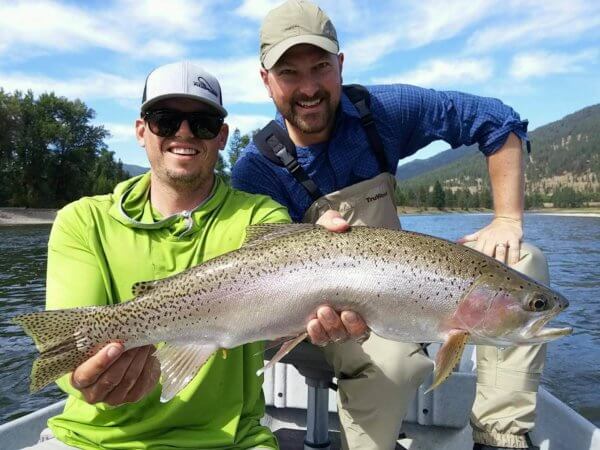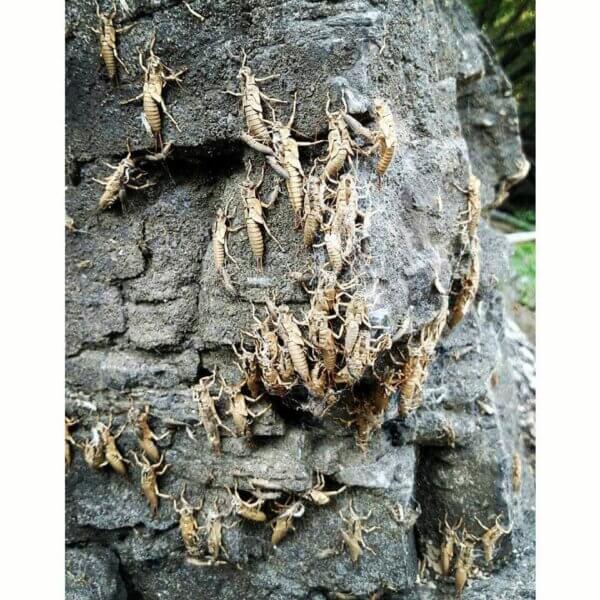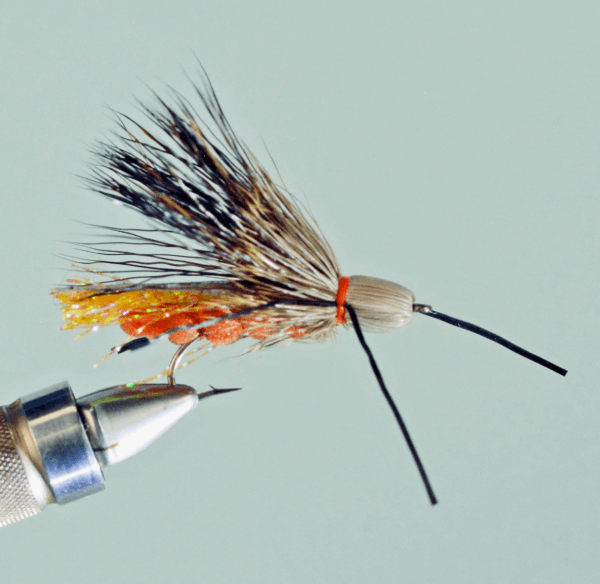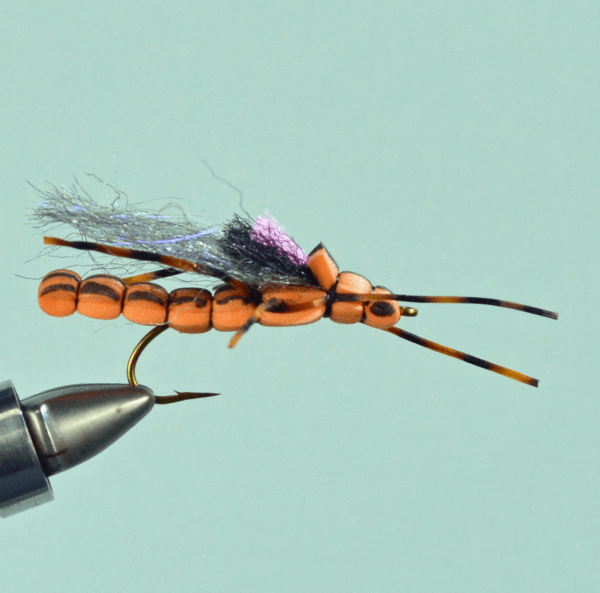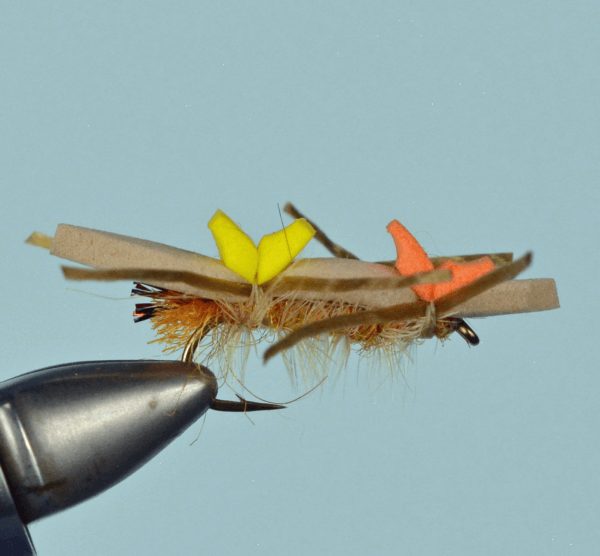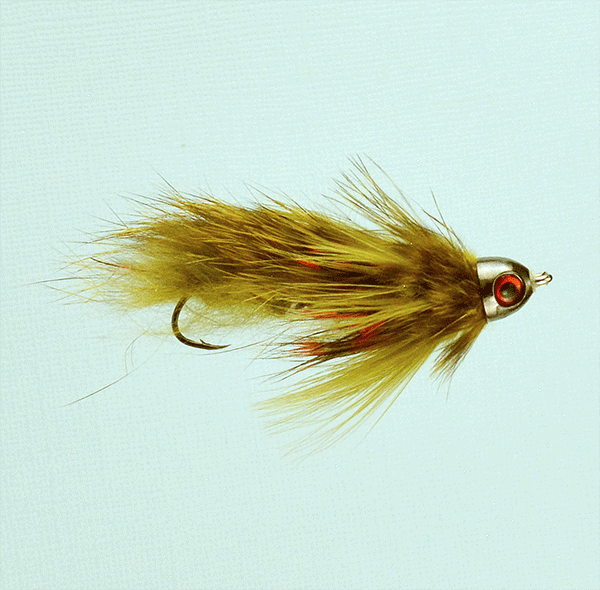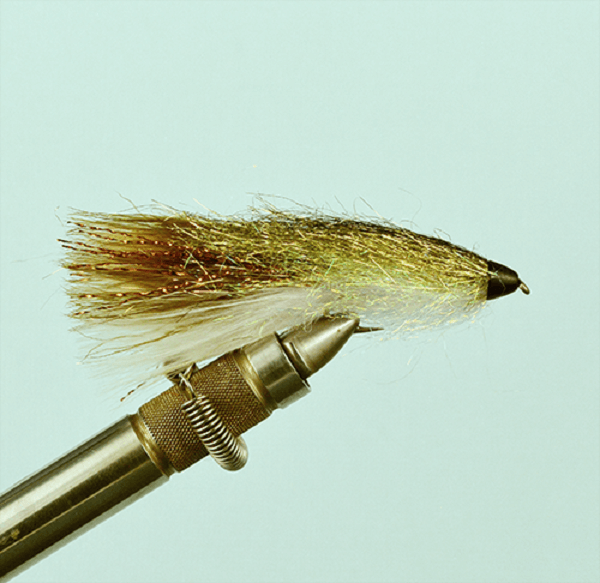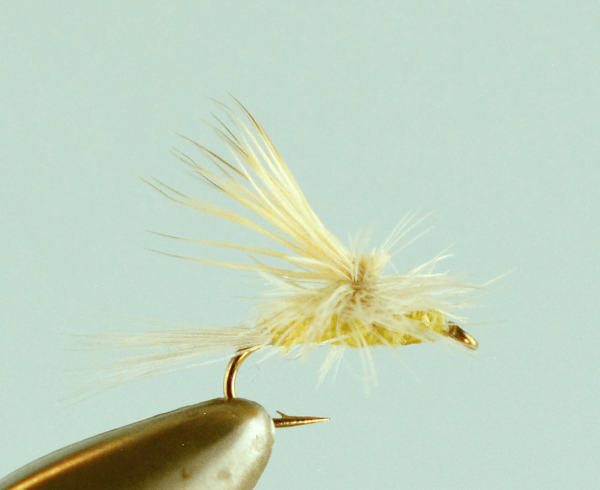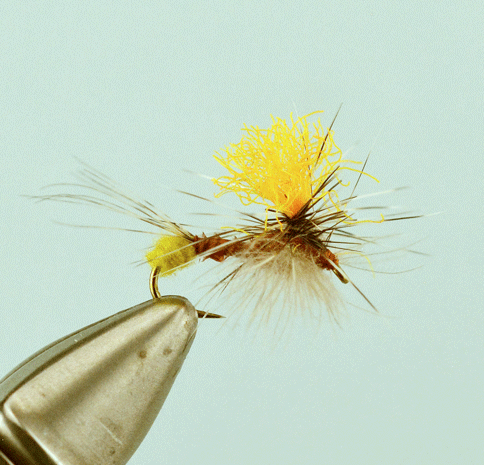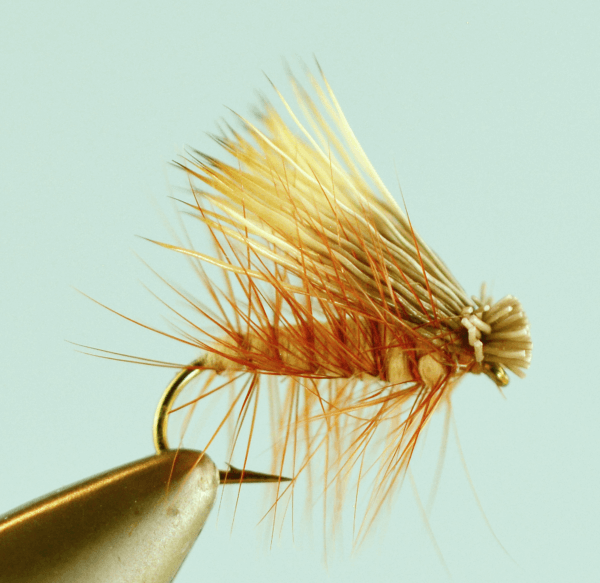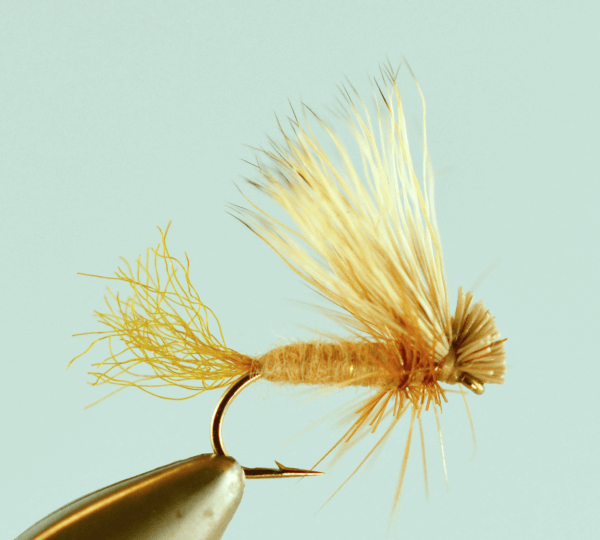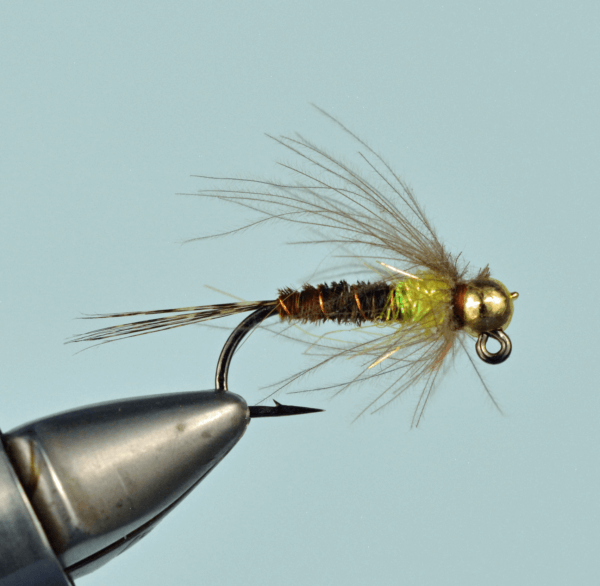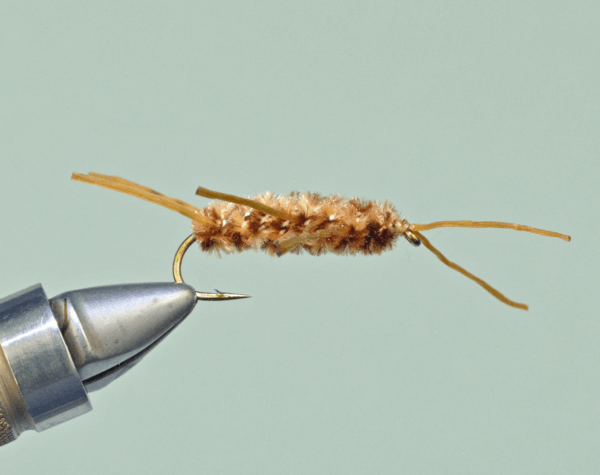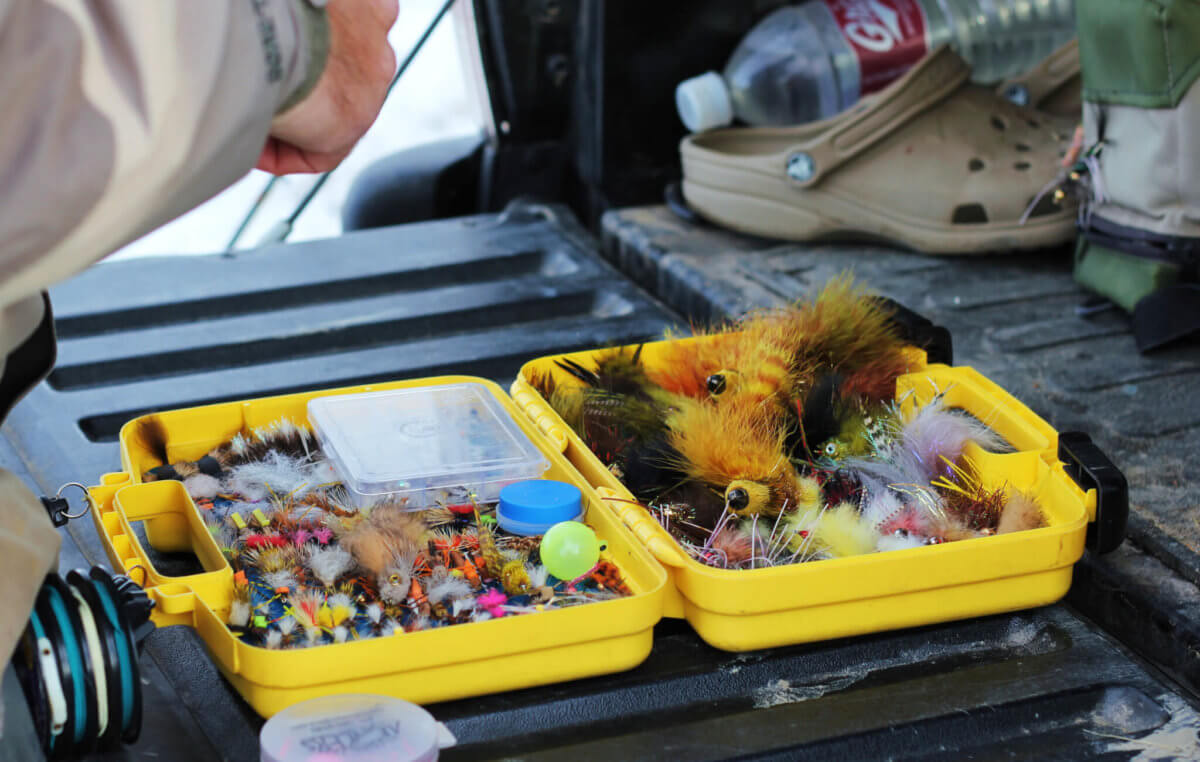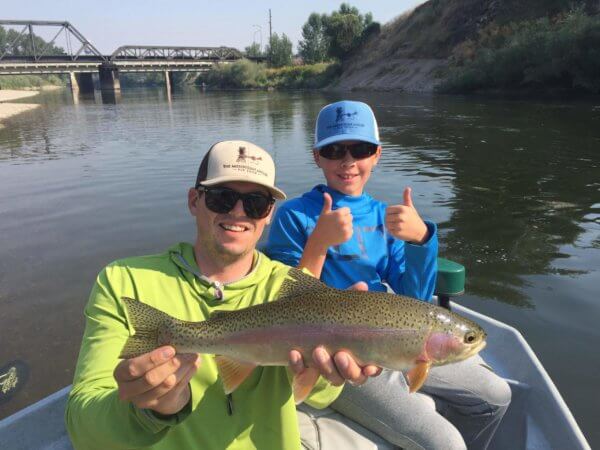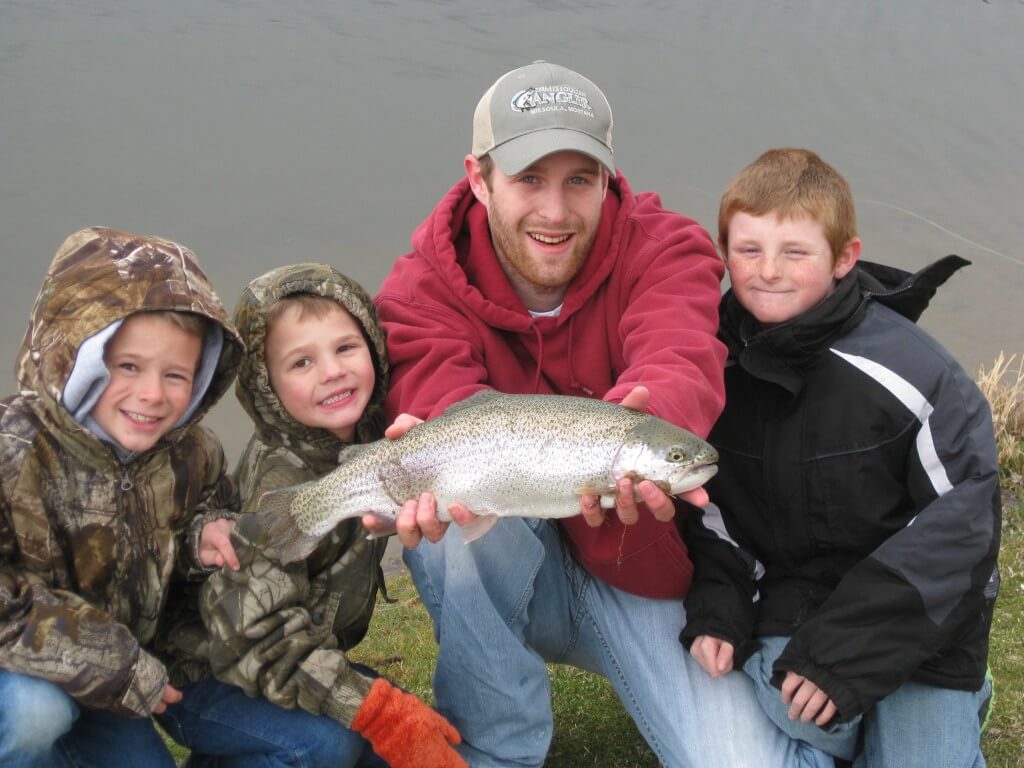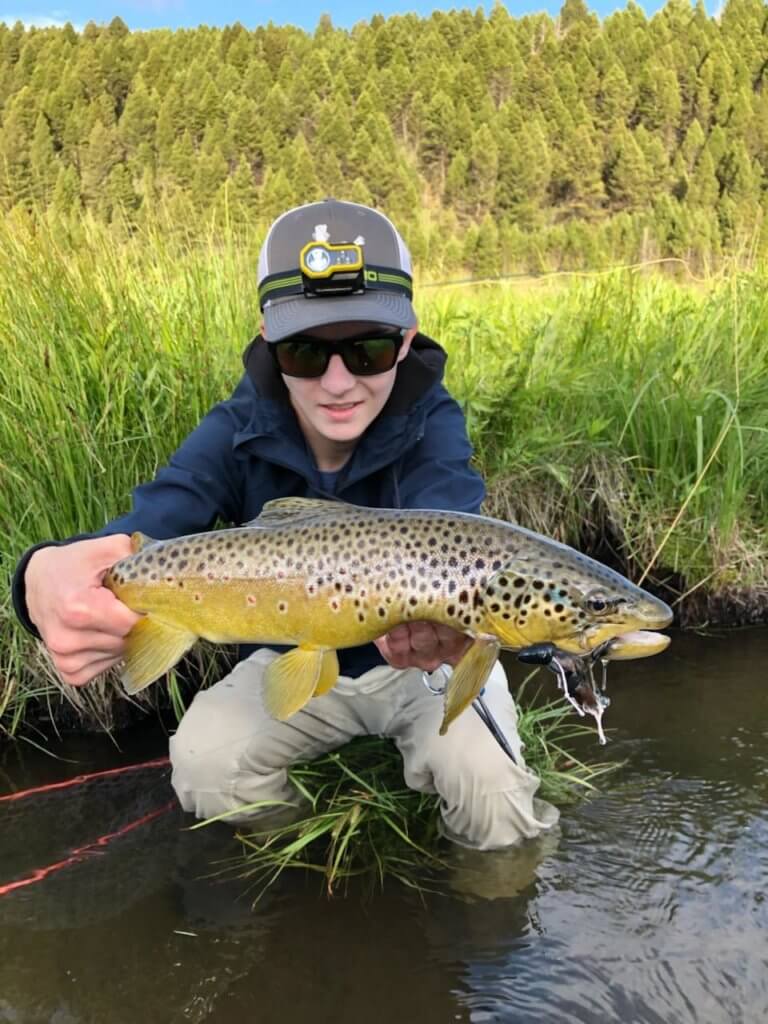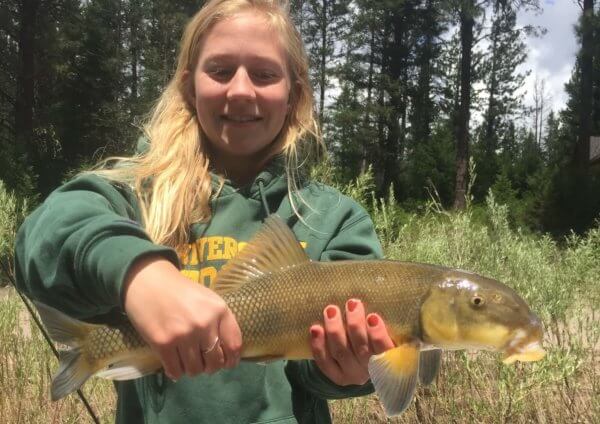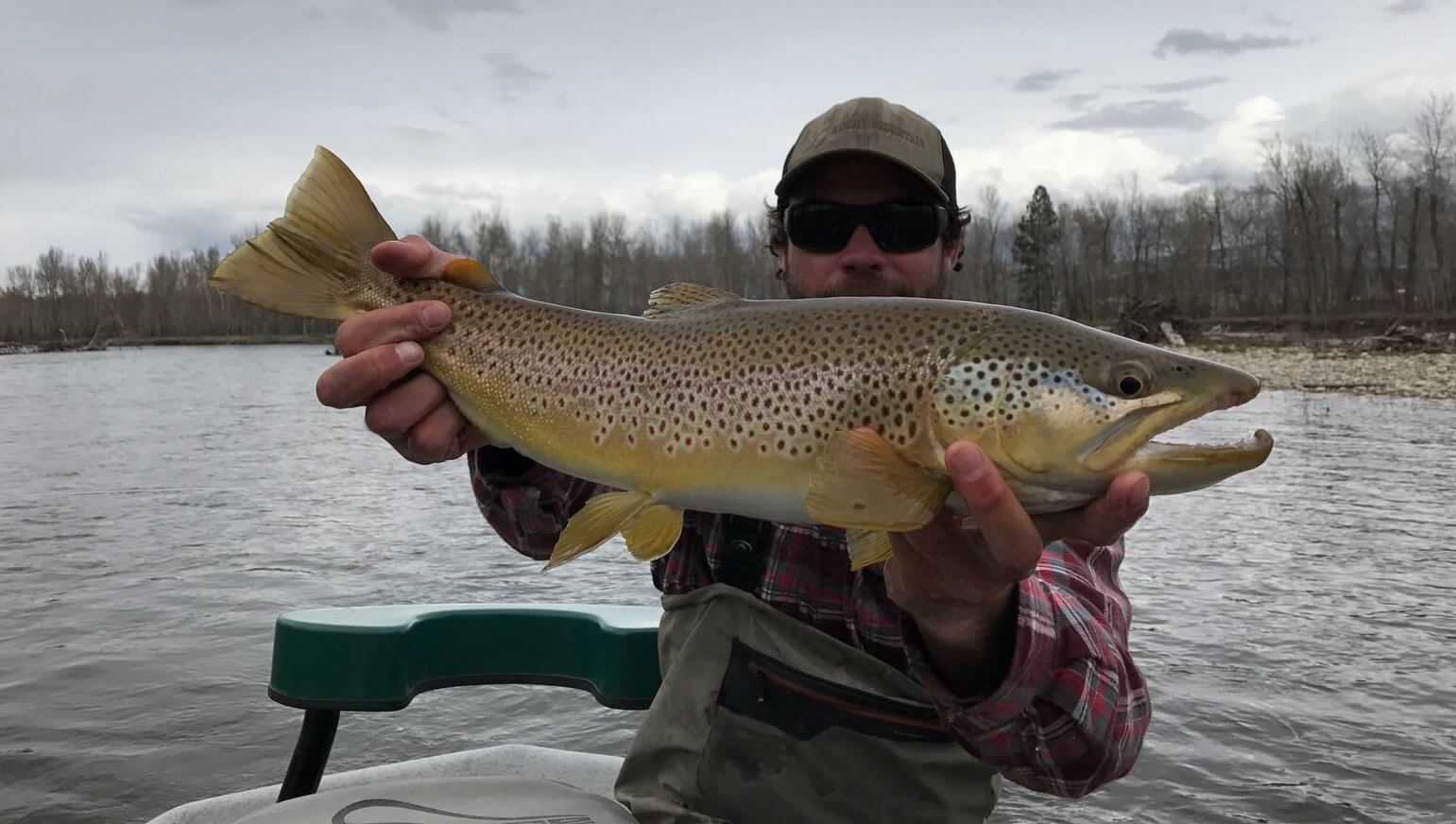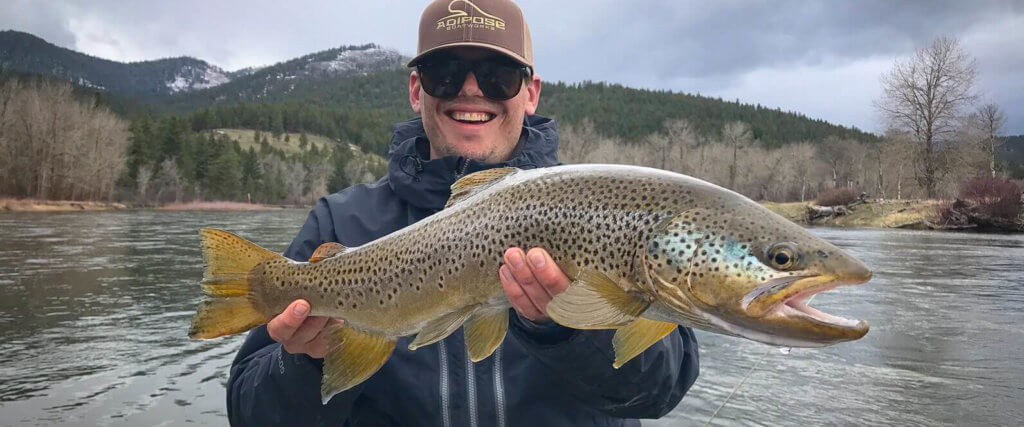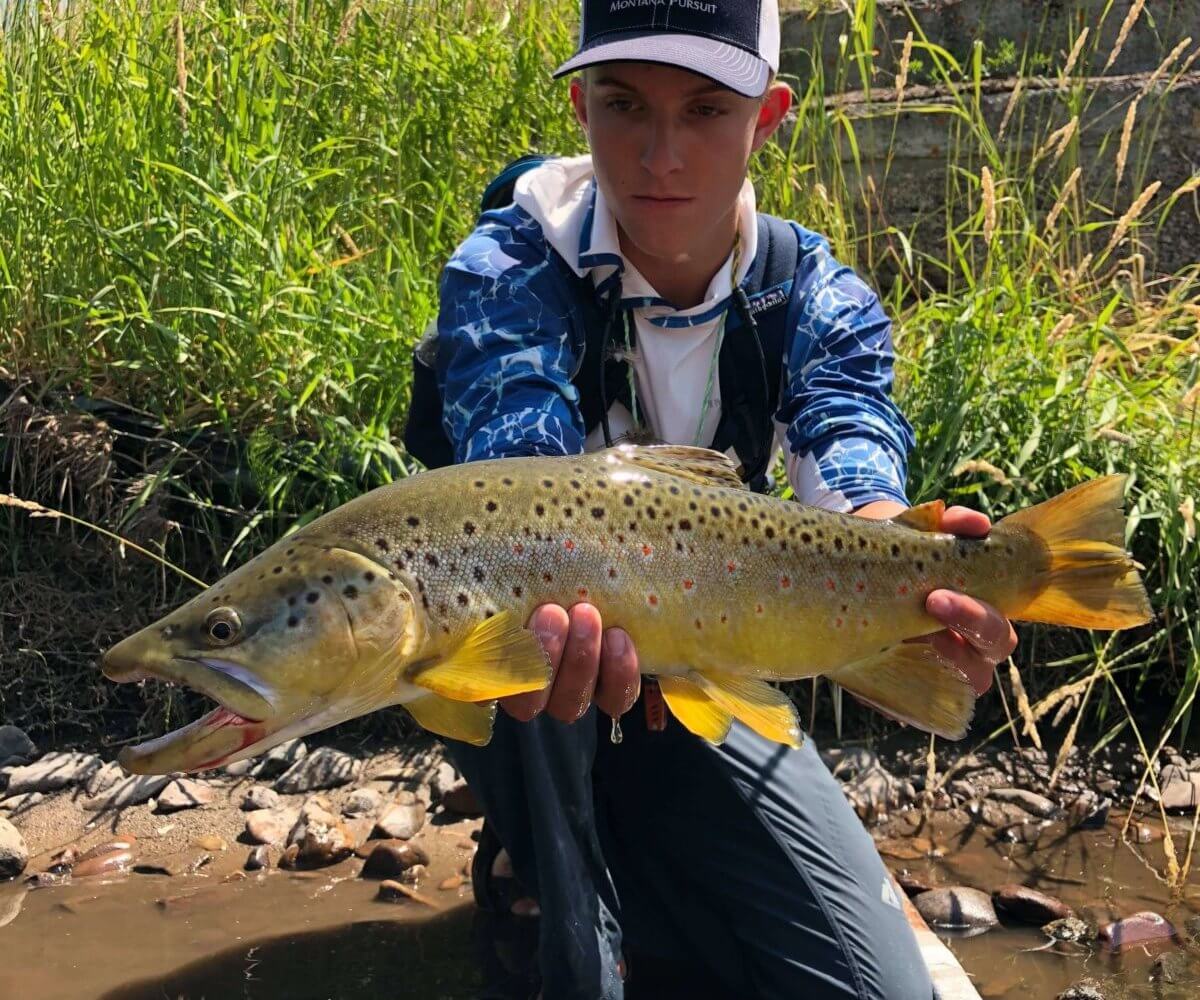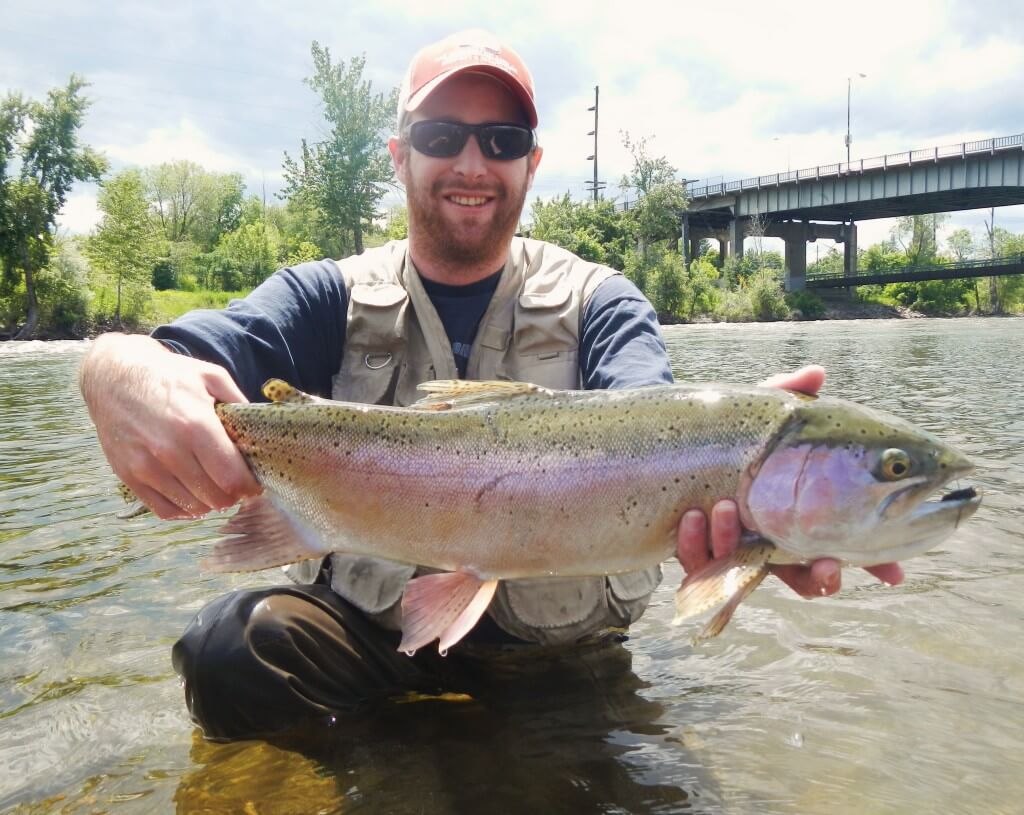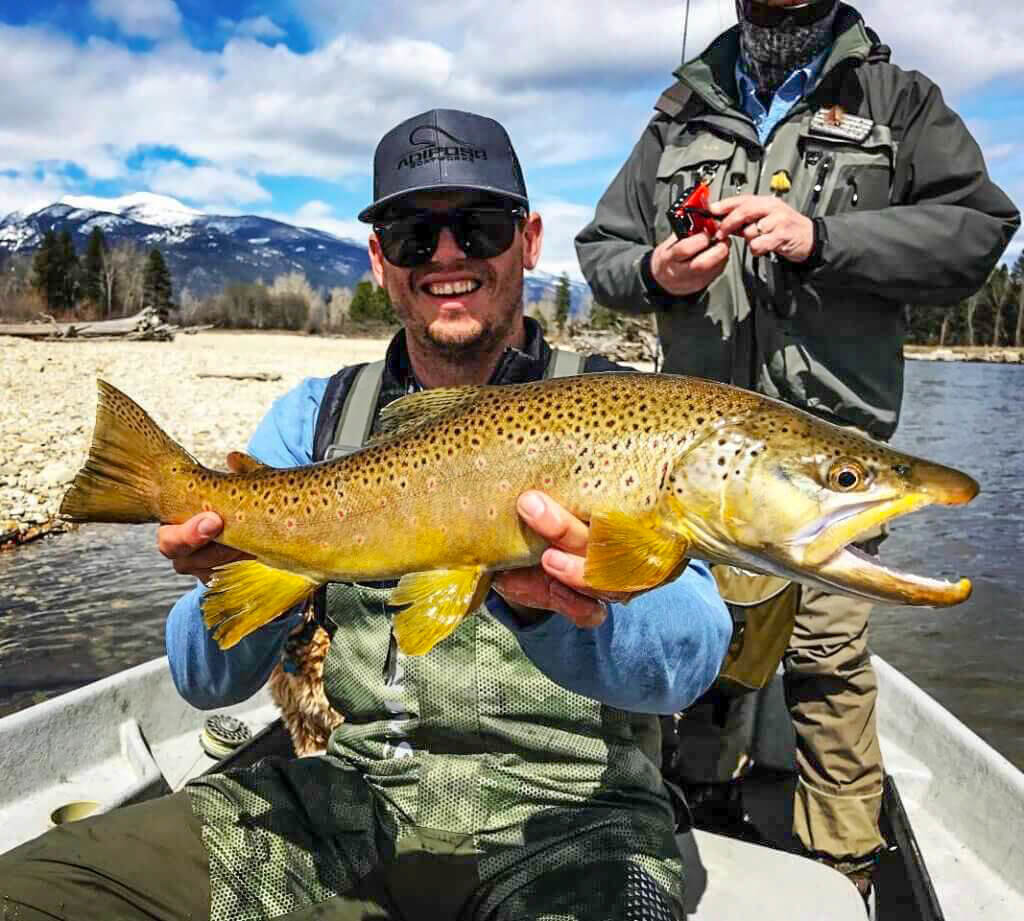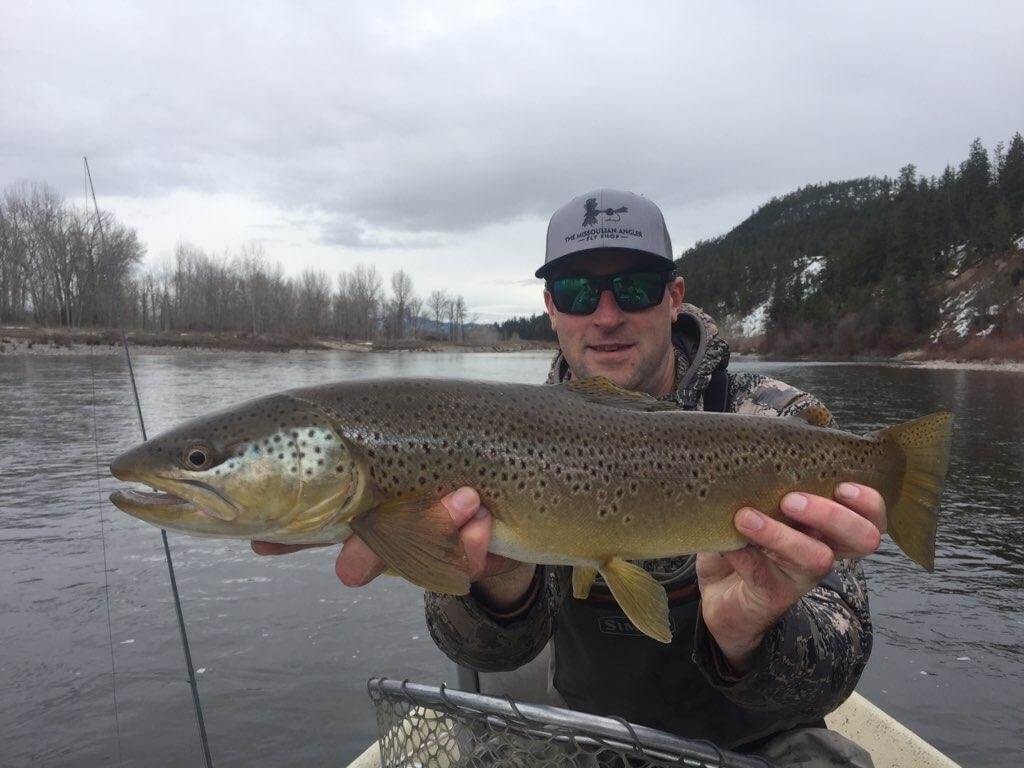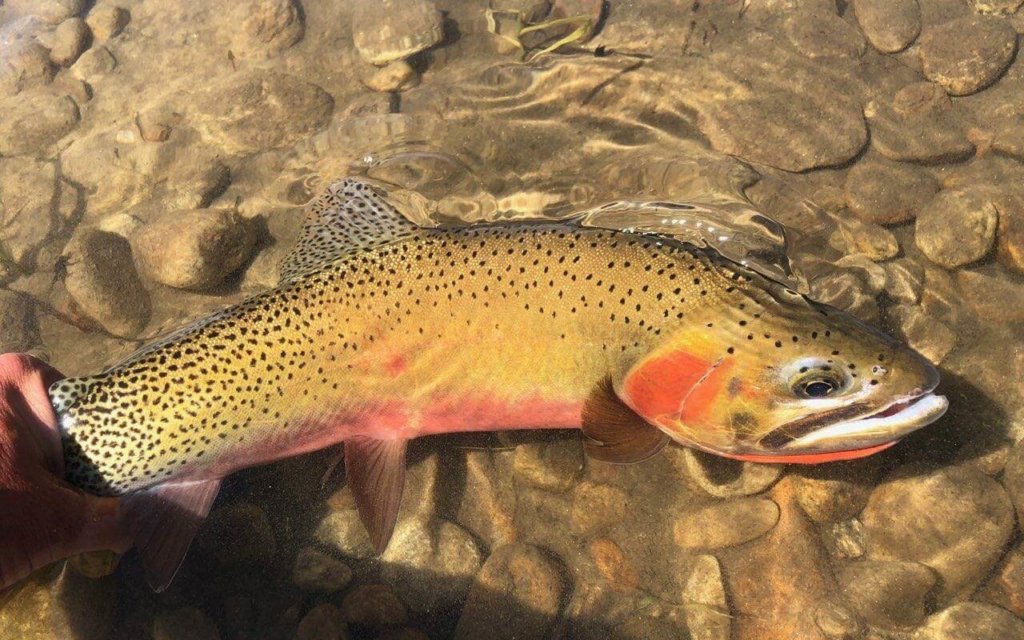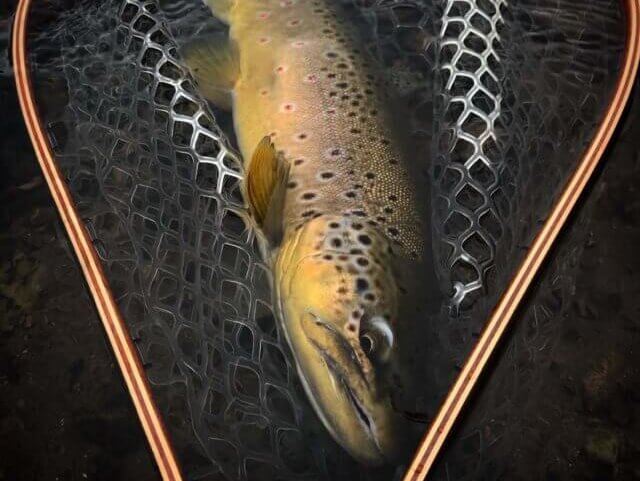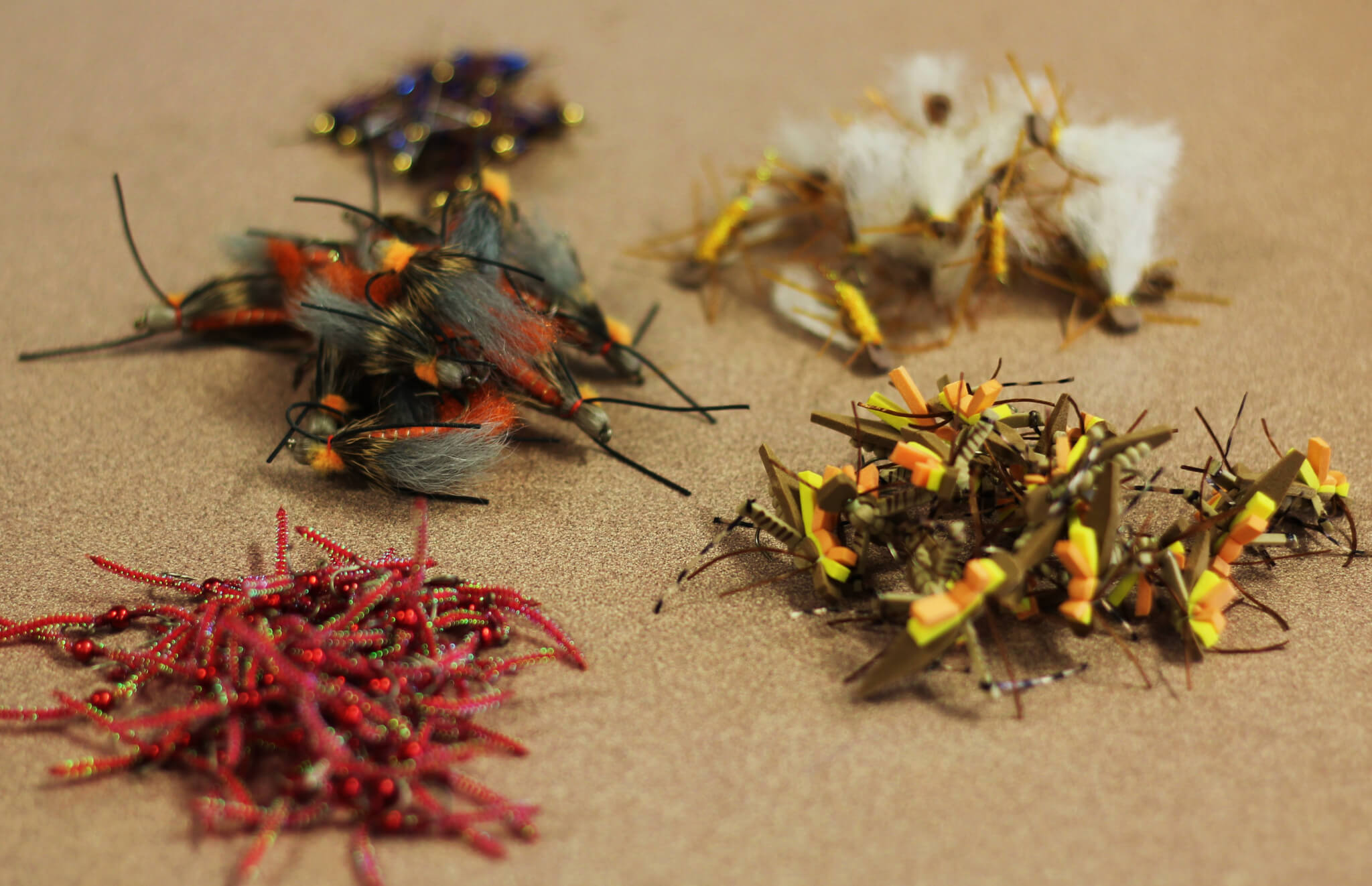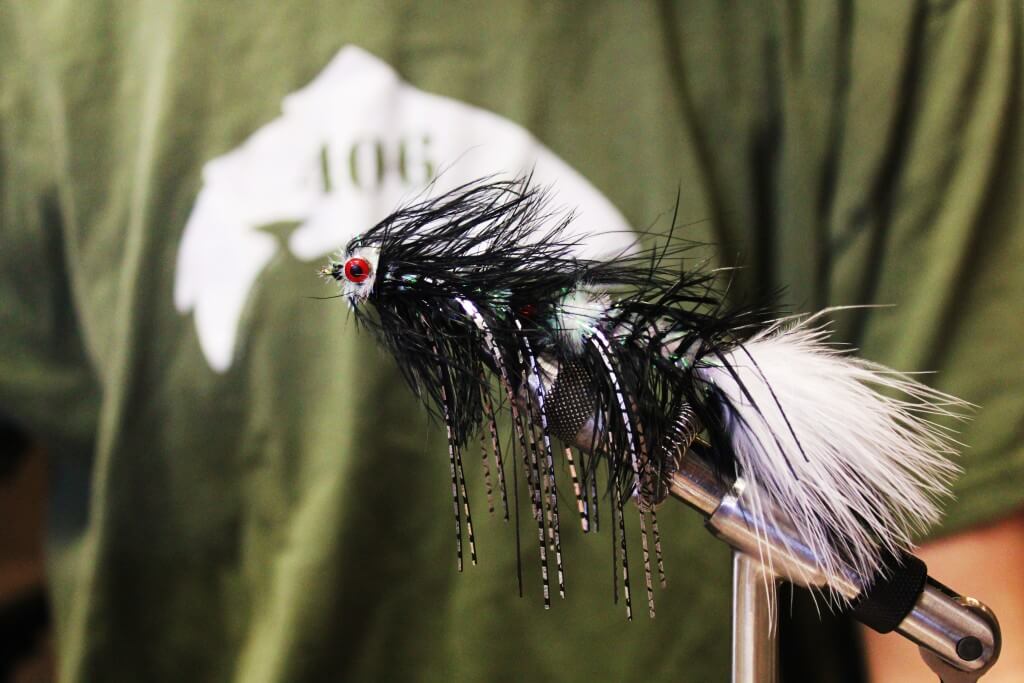For Missoula, and most of Montana, July fly fishing comes in like a lion and goes out like a lamb. It starts like a house afire, and it often ends up just being hot! Montana rivers start the month high, cold and green, and end it low and clear. For the wading angler, this can be a blessing, for the floating angler, not as much. For those who float or row, early July can be the trickiest time of the year. As the water drops, the rivers teeth start to stick up and come into play. But the water isn’t actually low, it’s just lower. Still a lot of push in the river, and the snags, rocks and sweepers are now a lot closer to the surface, and a lot more dangerous. Pay attention when rowing in early July! But we digress. . . . . . .
Stoneflies
If you want, July can start BIG! Not as big and bright as June, as the Salmon Flies are starting to wane, but they’re still around, coming back to the water to lay their eggs. The Rogue Salmon Fly or the Morning Wood Special in a size 6-8 can work very effectively, as the adult salmon flies are shrinking as they return to lay eggs. They get smaller and darker as the hatch progresses, and your flies should reflect that. However . . . .
The best fly fishing guides in Missoula will tell you the moment the Golden Stones appear in numbers, it’s time to drop the big guy and go for the gold. The goldens are a more consistent hatch along the river, and the fish will rise more readily to the golden. Maybe they taste better? We don’t know that, but we do know they’re usually more productive as we head into July. If you’re not ready to abandon the salmon fly altogether, we can suggest a few “Tweener” flies. A tweener is a fly that does double duty- could be a golden, could be a salmon fly. A great example of this is the El Camino Grillo Golden in the larger sizes. Fits the bill for a big golden or small salmon fly. A long time stalwart in Missoula is the PK Golden, and don’t sleep on the Plan B either. While it may sound like a second tier fly, the Plan B is a go-to for Missoula fly fishing guides.
Streamers
Lets go back to big for just a second. At the beginning of July, when the rivers are full and maybe still a bit off color, a streamer will often move the biggest fish in the river. The lack of clarity in the water helps them feel safe, and the higher water means the fish are hugging the banks looking for an easy meal they don’t need to move far for. A streamer worked along the shoreline doesn’t give the trout a lot of time to make up its mind, and the vicious hit of a big trout bent on making the most of what the river rips by can about knock the rod out of your hands! Agreed, the surface activity can be so good that you don’t think past the meniscus, but the trout are feeding at all levels of the river. If you’re on the water early and there’s no movement on top, it’s a great time to mobilize big fish with big flies.
Mayflies
The Pale Morning Duns and the Pale Evening Duns are also out in big numbers in the month of July. Look for the PMD’s to come off anywhere from 9:00 am to 1:00 pm depending on weather. Soft water and longer glides can offer some of the most exciting fishing in Montana and locally, with blanket hatches of PMD’s coming off steadily for 1-2 hours. Have a good selection of bugs, as the fish can get a bit snotty. The Tilt Wing PMD and the Last Chance Cripple cover a lot of the stages of the adult life cycle, and are go-to flies when the hatch is on. The Parachute PMD is easier to see, and is also very effective.
The Pale Evening Duns can be a bit trickier to find. They’re extremely weather dependent. If the day has hit 95 degrees (not uncommon in mid-July- bring your sunscreen!) the PED’s might not come off till about 15 minutes before dark. Be ready, so you’re not trying to tie your fly on in twilight! The same bugs that work for the PMD’s will work for the PED’s as well. If the day was cool or cloudy, they may start to appear as early as 7:30. Make sure you’re ready on the water when they come off, because they are going to. It just depends on the day.
The Rusty Spinner deserves a paragraph all its own. Both the PMD’s and the PED’s will morph into Rusty Spinners, so there are a lot of them on the water. The spinner is a spent mayfly that has returned to the water to die. Their wings are flat to the surface, and they are very difficult to see if you’re not looking for them. They will come off at dusk or dawn, or both. If you’re an early riser, you might find some early risers! If you’re out late, and the trout have spurned your classic PED patterns, switch over to a Hi-Viz Rusty Spinner. You will be astounded at how popular that darn near invisible (to us) fly is to the trout.
Caddis
The reason you might not be ready for the PED’s is the Tan Caddis. When they are on, they are ON! They will also come off around dusk on the Clark Fork River, Rock Creek, the Bitterroot River, the Big Blackfoot River and all across Montana. The Tan Caddis may be the most popular fly in the entire state. If you run across a blanket hatch, and there are few fish rising, move directly to the Deep Caddis Pupa Tan or Translucent Pupa Tan. Those insects on the surface didn’t appear from nowhere, and if the fish aren’t feeding on the surface, they’re feeding underneath! If you find them rising in faster water, nothing works better than a Tan Elk Hair Caddis. Find them in some slower water, and the X-Caddis Tan is often the answer. The Tan Caddis is also a great searching fly throughout the day, and will move fish at the strangest times in the strangest places!
Terrestrials
These hatches are huge as the month of July starts, but wane as the month goes on, until what was once a blizzard is now a mere localized squall. As the water drops and clears, and the aquatic food sources begin to dry up, the fish need to widen their gaze, and start looking for alternative meals. The big hope is the Spruce Moth. They can be huge in the last weeks of July, depending upon the weather. You can hear the landowners curse as the tops of their trees are destroyed, but to the trout, they can be a huge bridge between the cornucopia of early July and the tricos of August. Ron Beck’s MAngler Moth is every guide’s favorite fly, but don’t lose sight of the Spruce Almighty, or even a big tan caddis when the Spruce Moths are on the water.
This is also the time that your Ants and beetles begin to shine. The hot days get those bugs moving around, and every time the wind blows, more enter the river systems. We enjoy the Foam Beetle, as it floats well, and is almost easily seen. The Ant-Acid has become very popular in the last couple of years, as has the ????. It’s a bit early to look to the hopper, unless July has been brutally hot, but the hopper days are coming, rest assured. Patience is required when fishing terrestrials, as the fish aren’t always looking up when we think they should be . . . . .
Nymphs
So go to the nymph!! Pick a good, basic nymph in a size 14-16 and fish the crap out of it. Jig nymphs sink faster- never the wrong choice. The fish are missing their regular meals, and will move a good distance to find some food. If you come across a good deep hole, the Pats Rubberlegs is still a top producer, especislly on the Clark Fork River. Stoneflies nymphs in Missoula have a 2-3 year lifespan, so the Pat’s is always a good bet in the deeper parts of the river. A Double Bead Stone may be a bit much, but you’re sure going to get down to the bottom of the river with that fly in late July!
Mousing
There’s another terrestrial that deserves special mention in July, and that’s the mouse. Yes, the mouse. Late in the month, when the rivers have calmed down, and the heat of the day has driven the big fish deep into the shade, the mouse can be magic. It takes a little intestinal fortitude to fish rodentia, as the best mouse fishing is found after dark. We find its best to do your mousing in water you’re familiar with- a little prescouting doesn’t hurt either. A flashlight or headlamp is also highly recommended. The big Browns across Montana come out to feed after dark, and its not what you think it is. Darkness hides them from predators, and they will move into shallow water to feed. Work the top of a pool, right where the riffle comes in, and the tail out, where the water shallows back up again. At night, the big fish are in skinny water, and that’s where you need to be. If the mouse isn’t producing, switch to a streamer. Same place, just sub-surface. The takes can be brutally hard. But truthfully, we’re looking for the sippers, the trout that’s so big it takes your mouse with hardly a sign. That’s why you’re on the water after midnight, for the fish that hasn’t seen the sun for 3 years!
Final Thoughts
In like a lion, out like a lamb. The wading is tough in the beginning, awesome at the end. Reverse that for floating. You start the month with 2X tippet, and can find yourself with 4’ of 5X on July 31st. That’s what July is in Missoula and across Montana, the month with the biggest change. Be ready to match the hatches, be ready to make your own with some terrestrials, or get down to where the fish are when the hatches wane and the sun comes out. You get to see it all in July.
Missoula Montana Guided Fly Fishing Trip
Come enjoy a day on the river with Missoula’s best fly fishing guides. We float the Bitterroot River, Blackfoot River and the Clark Fork River. All gear, lunch and transportation provided.
